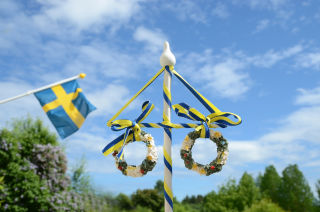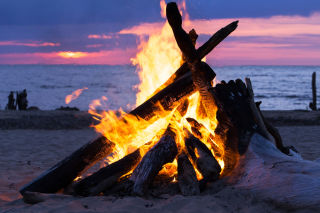How Scandinavians Celebrate Midsummer
Summer is officially here and in Scandinavia, the celebrating of midsummer is a significant occasion that symbolizes the end of the long dark winters. That’s why there’s no better way to do so than to be outdoors with friends and family amongst crowds partaking in a slew of heart-warming festivities.

See all summer offers
The days of celebration in Scandinavia occur between the 20th to the 25th of June. So if you find yourself in Denmark, Norway or Sweden during this time, do as the Scandinavians do – cross your fingers for good weather and brace for good times during the longest day of sunshine.

Sweden
Besides crossing their fingers and hoping for wonderful weather, celebrating Midsummer for the Swedes occurs on the first Friday of the summer solstice (Note: this is a different day than their Scandinavian counterparts). Planning in advance for Midsummer’s Eve celebrations start months in advance, as the Swedes prepare to enjoy a nice long weekend away in a cottage away from the city. So if you don’t have a summer home of your own, get yourself invited to one or find a nice hotel by the sea (in Sweden you’re never too far from nature).
Other Swedish Midsummer celebration classics include having deliciously homemade food, wearing flower crowns for girls, dancing around the maypole (pictured above), tug of war games, potato sack races and lots of games involving schnapps. Don’t forget the old saying: if there is no herring on the table, there is no party! So be a friendly guest and bring along some schnapps and your favourite marinated herring to share.
Throwing your own Swedish Midsummer celebration? Here’s a full guide on what not to forget.

Norway and Denmark
Norwegians and Danes celebrate the coming of summer on the 23rd of June every year on a day they call “Sankt Hans Aften” which directly translates to Saint John’s Eve, historically named to celebrate the birth of religious figure, John the Baptist (who was born six months before Jesus Christ on the 24th). Over the years, Sankt Hans Aften/Midsummer has been closely observed with the association to powerful forces of nature. In earlier days, medical herbs were thought to have the best effect if collected on the evening of midsummer and witches (symbolically crafted figures thought to have derived from German craftsmen in 1860s who were visiting Kalundborg in Denmark at the time) were burned over a bonfire with a purpose only to ward away evil spirits.
While in Denmark, many of the bonfire celebrations happen in lakes or coastside, Norway’s vast landscape makes for a scenic celebration that usually takes place along the coast or up in the mountains. The Norwegians take their bonfires so seriously, that in 2010 residents in Alesund, Norway built the world’s biggest bonfire to commemorate the occasion.
Newer celebration rituals for midsummer to complement the bonfires, include singing the customary Midsummer song in Denmark, “Vi elsker vort land” (We love our country), written by Danish poet Holger Drachmann in 1885. So, when you find yourself in a Danish or Norwegian city over midsummer, be sure to bring a blanket, a chair and some of your favourite drinks to a local bonfire (and take a copy of the lyrics along to make sure you’ve got the full spirit in hand). Some time around late evening (from 8 PM – 10 PM), celebrations usually start with a speech and then lighting of the bonfire. But should you find yourself in rain, there shall be no burning possible and the old folklore goes without saying: “The fewer hazelnuts will grow”. So let’s pray for hazelnuts in our morning muesli and cross your fingers for sunshine.


